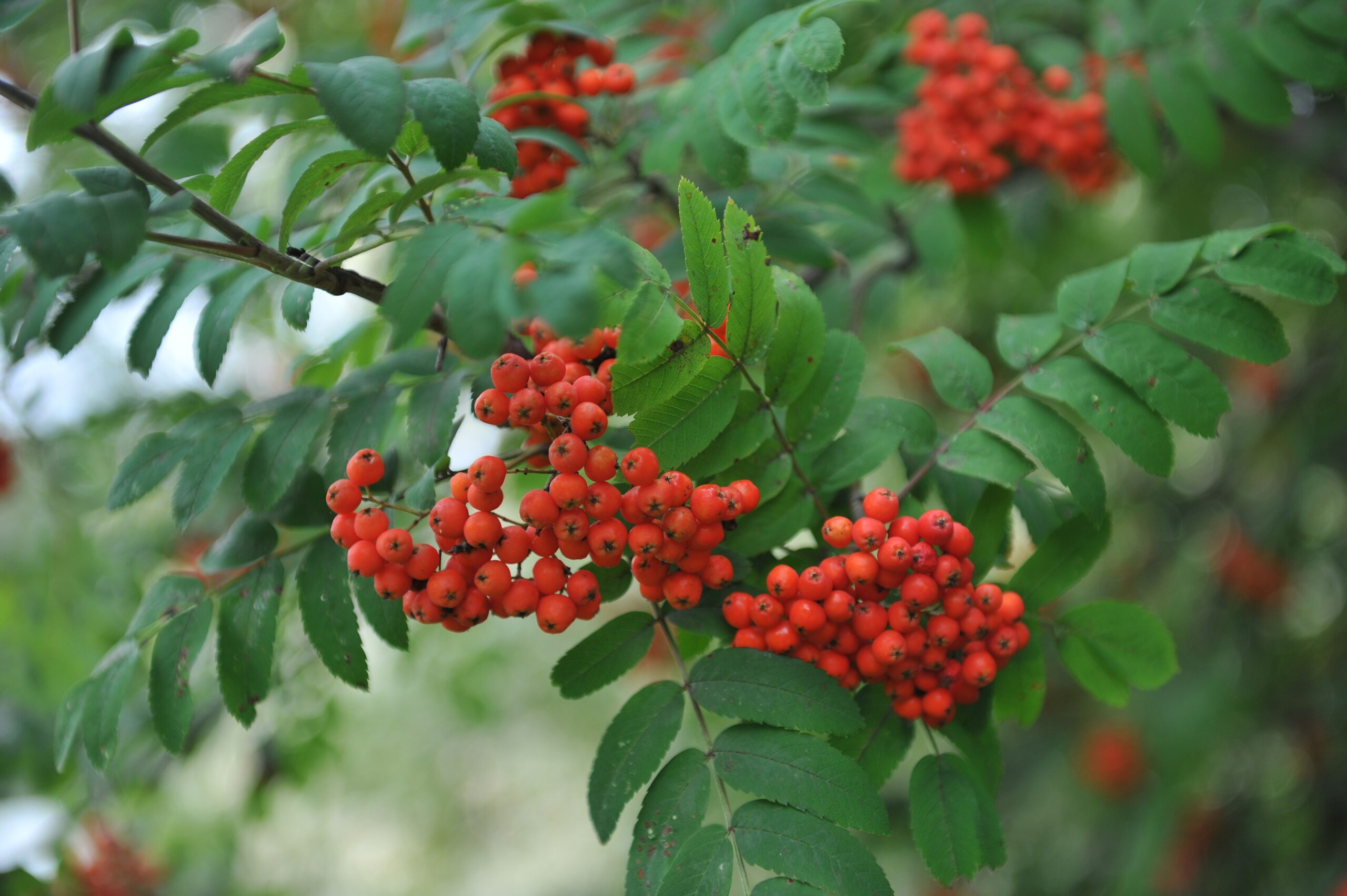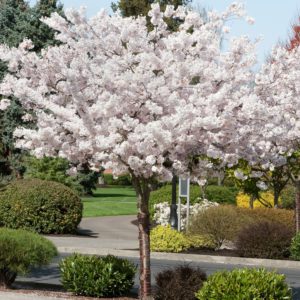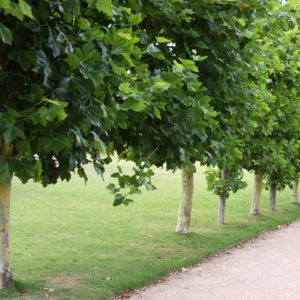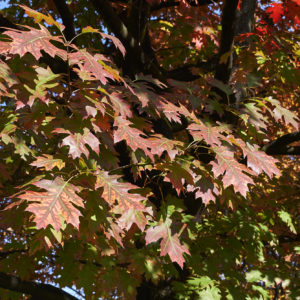Sorbus aucuparia ‘Rossica Major’
Price range: €325.00 through €450.00
Frequently Bought Together



Description
Quick Facts
- Common Name: Russian Rowan, Large-Berried Mountain Ash
- Botanical Name: Sorbus aucuparia ‘Rossica Major’
- Plant Type: Deciduous tree
- Mature Height: 8-12m
- Mature Spread: 5-7m
- Flowering Period: May to June
- Flower Colour: Creamy-white flowers in large clusters
- Foliage: Pinnate leaves with 9-15 leaflets, turning yellow, orange, and red in autumn
- Hardiness: RHS H7 (very hardy)
- Soil Requirements: Moist, well-drained, tolerates most soil types including acidic
- Aspect: Full sun to partial shade
- Maintenance: Low
Description
Discover the spectacular beauty of Sorbus aucuparia ‘Rossica Major’, an exceptional cultivar of our native Rowan that brings dramatically larger berries, more abundant displays, and outstanding wildlife value to Irish gardens with its magnificent clusters of oversized fruit. This outstanding selection offers all the beloved qualities of the native Rowan but amplified—exceptionally large berries measuring up to 1.5cm in diameter (nearly twice the size of the species), produced in massive pendulous clusters that create breathtaking displays of brilliant orange-red from late summer through autumn, abundant creamy-white spring flowers that attract pollinators, and elegant pinnate foliage that transforms into warm autumn tones, making this one of the most spectacular and wildlife-friendly trees available.
In late spring, this captivating tree becomes adorned with large flat-topped clusters of creamy-white flowers measuring 15-20cm across, creating a spectacular display that attracts bees, butterflies, and other beneficial insects in abundance. As summer progresses, clusters of berries develop, and this is where ‘Rossica Major’ truly excels—the berries are dramatically larger than the species, ripening to brilliant orange-red and produced in such abundance that branches bow under their weight, creating one of the most spectacular berry displays imaginable. The massive clusters persist from late summer well into autumn and early winter, providing invaluable food for thrushes, blackbirds, waxwings, fieldfares, redwings, and other songbirds. The elegant pinnate leaves create soft, feathery texture throughout summer before transforming into warm shades of yellow, orange, and red in autumn, complementing the spectacular berry display.
This remarkable cultivar originates from Russia, where it was selected for its exceptional berry size and abundance—’Rossica’ refers to its Russian origins, whilst ‘Major’ describes the notably larger berries. Sharing the exceptional hardiness and adaptability of the native species, ‘Rossica Major’ thrives in Irish conditions, tolerating exposed upland sites, poor acidic soils, coastal winds, and urban pollution whilst delivering superior ornamental impact and exceptional wildlife value that surpasses the already excellent species.
Create stunning compositions by planting as spectacular specimen trees in lawns where the massive berry clusters can be fully appreciated and enjoyed by both people and wildlife. Magnificent in naturalistic woodland gardens, wildlife gardens, or ecological planting schemes where the abundant berries provide essential food for birds during autumn and winter. Works beautifully combined with other native trees like birch and oak, or underplanted with native ferns, foxgloves, and woodland bulbs. Exceptional for creating autumn interest and supporting biodiversity.
Caragh Garden Notebook
Planting: Space trees 6-8m apart for groupings or woodland plantings, or allow 8-10m for specimen placement. Plant bare-root trees from November to March, or container-grown specimens year-round (autumn or early spring is ideal). Dig holes twice the width of the root ball and incorporate organic matter. Plant at the same depth as the nursery soil mark. Stake for the first 2-3 years. Water thoroughly and mulch around the base.
Soil Preparation: Thrives in moist, well-drained soil with pH 4.5-7.0. Tolerates a wide range of soil types including poor, acidic, stony soils and heavy clay. Particularly well-suited to acidic conditions where many trees struggle. Prefers moisture-retentive soil enriched with organic matter but adapts to challenging sites. Tolerates exposure, coastal winds, and upland conditions. Best berry production occurs in full sun with adequate moisture—full sun is essential for maximum berry size and abundance.
Container Growing: Young specimens can be grown in large containers (minimum 60-80cm diameter) using soil-based, slightly acidic compost for several years. Water regularly during growing season, especially during flowering and berry development. Feed in spring with slow-release balanced fertiliser. Eventually benefits from planting out for long-term health and to achieve full size potential, maximum berry production, and greatest wildlife value.
Seasonal Care: Requires minimal maintenance—the naturally elegant form develops without intervention. Remove only dead, damaged, or crossing branches in late winter when dormant. Can be lightly thinned to improve air circulation and reduce disease pressure if needed. Watch for fireblight (blackened shoots)—remove affected branches promptly, cutting back to healthy wood. Apply slow-release balanced fertiliser in early spring to support the heavy berry production. Mulch annually with organic matter. Water during prolonged dry spells, especially during berry development, to ensure maximum size and abundance.
Propagation: Propagate by grafting or budding onto Sorbus aucuparia rootstock (specialist technique). The exceptional berry size and abundance will not come true from seed—seedlings will revert to typical species characteristics with smaller berries. Cuttings are extremely difficult. Most gardeners prefer to purchase nursery-grown grafted specimens for guaranteed quality, true-to-type characteristics, and reliable production of the spectacular oversized berries that make this cultivar so exceptional.
This spectacular cultivar is absolutely stunning—those massive orange-red berries are nearly twice the size of the native Rowan and produced in such abundance that branches bow under their weight! The wildlife absolutely adore it, and the visual impact from late summer through autumn is simply breathtaking. All the beloved qualities of our native Rowan but dramatically amplified. A true showstopper!
Additional information
| Pot Size | 12-14cm girth, 3-3.5m tall, Rootballed, 14-16cm girth, 3-3.5m tall, Rootballed, 16-18cm girth, 3.5-4m tall, Rootballed, 18-20cm girth, 3.5-4m tall, Rootballed |
|---|






